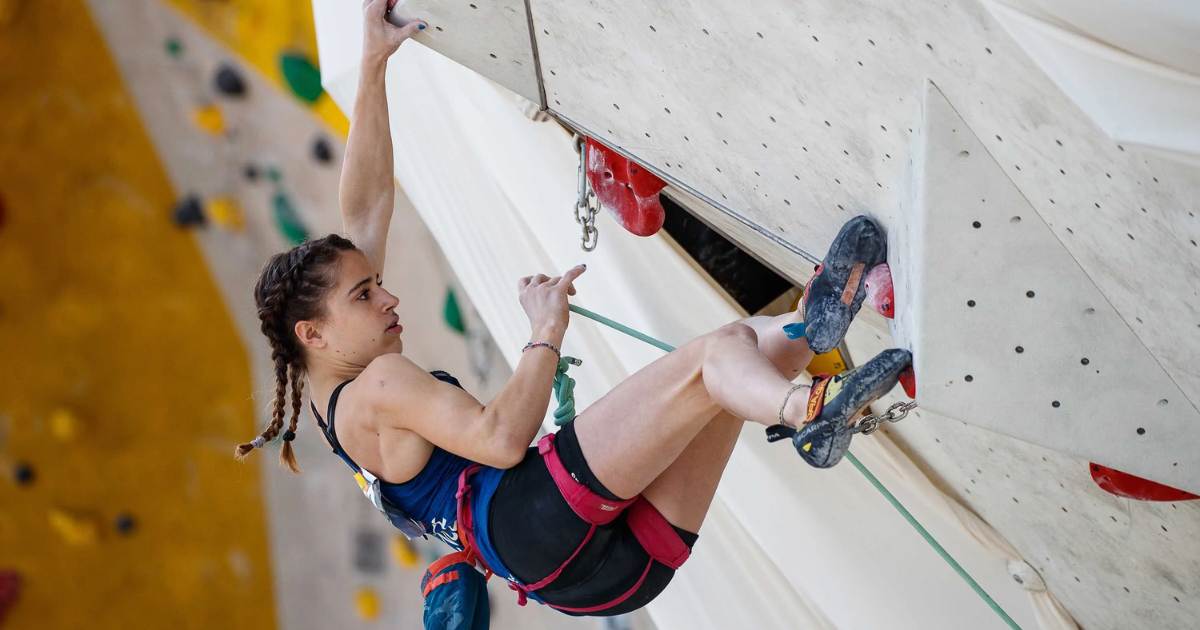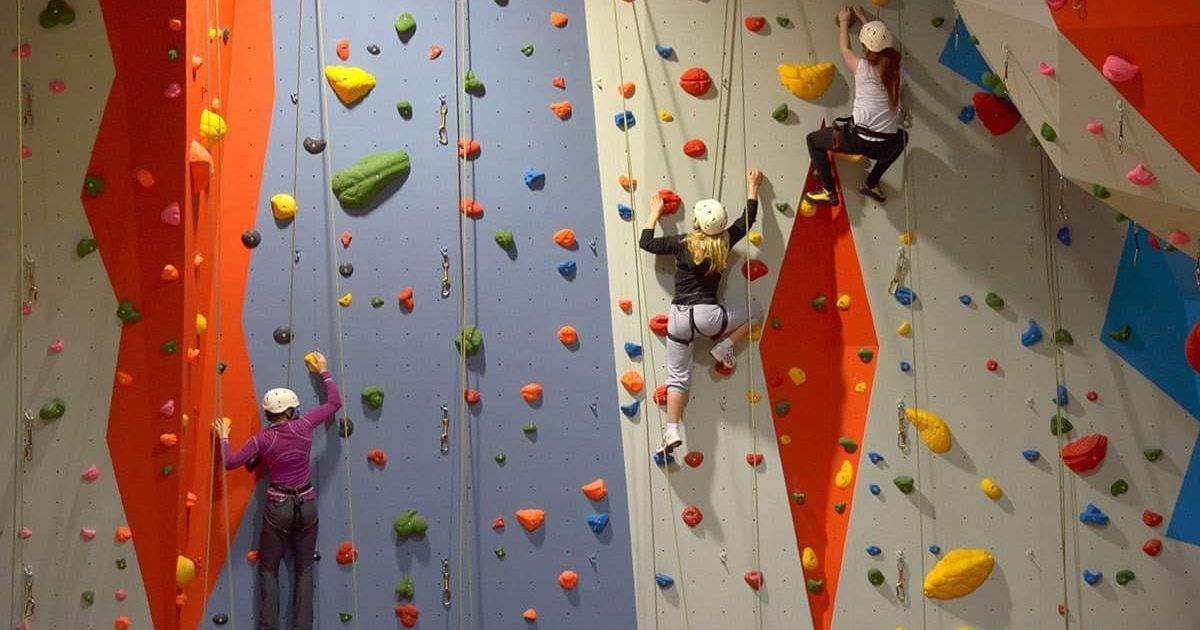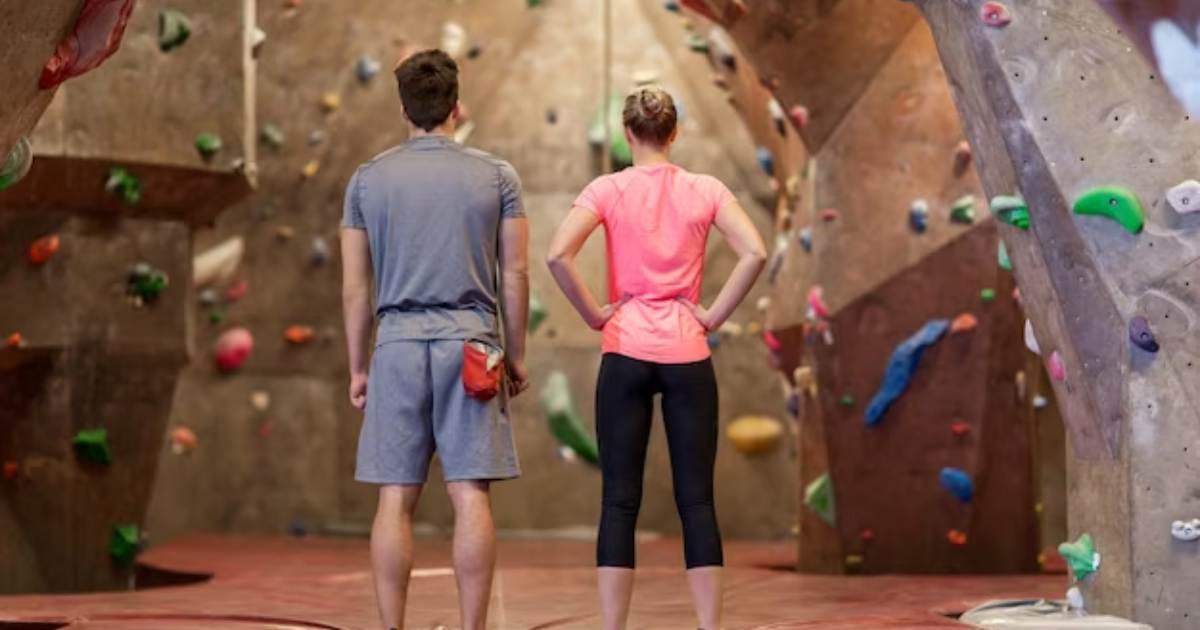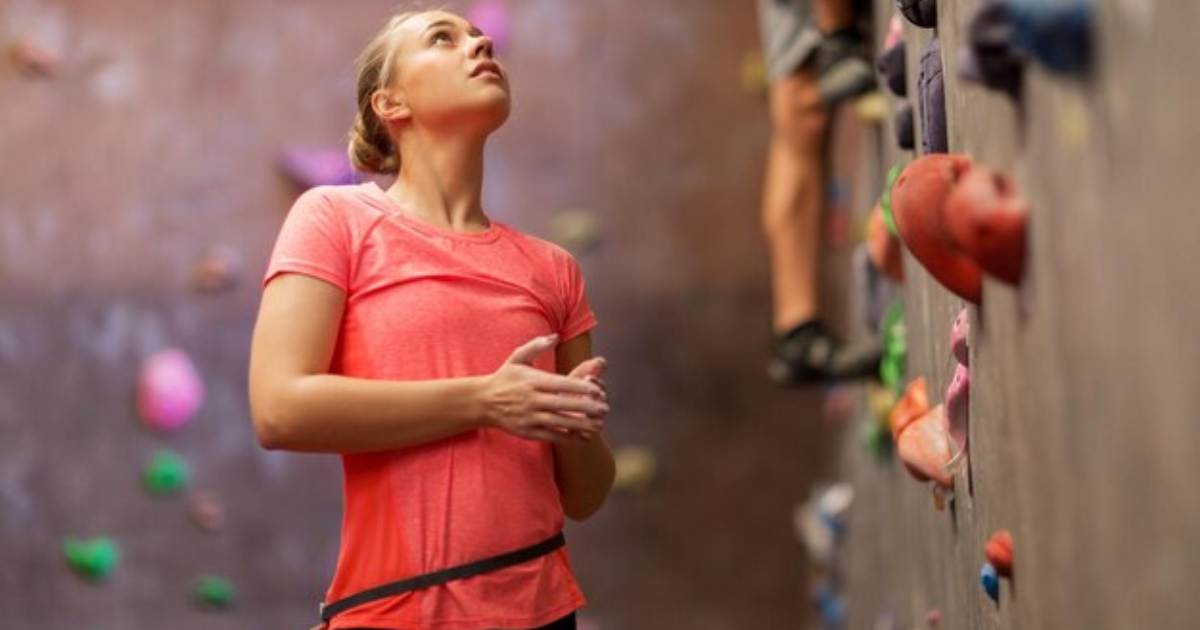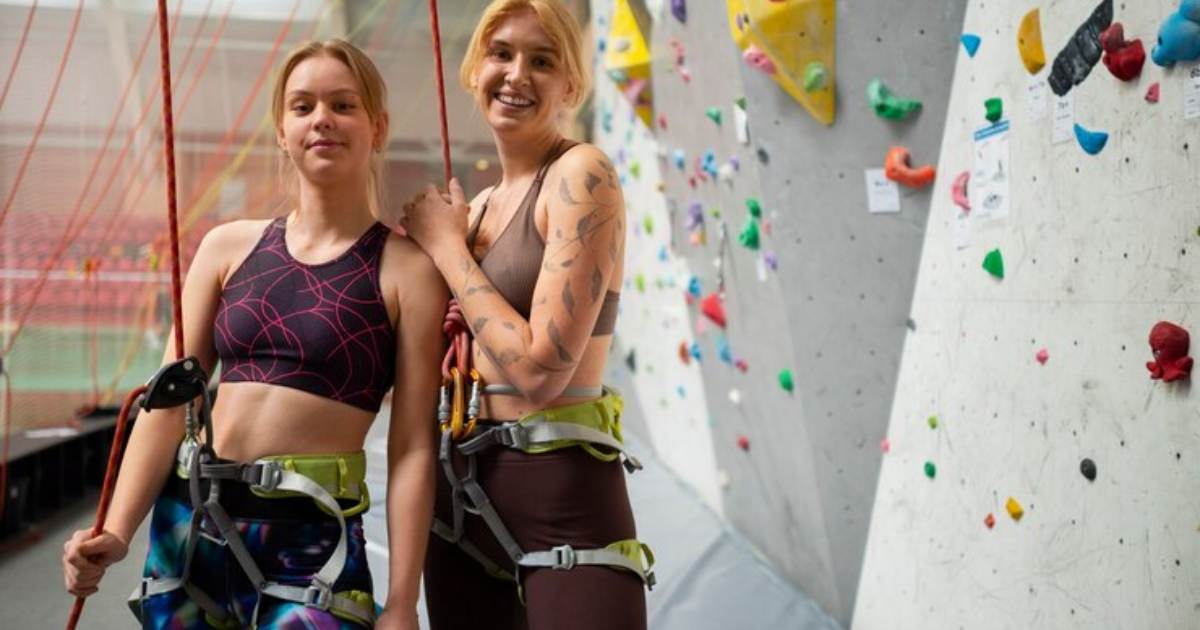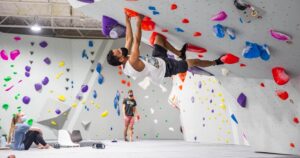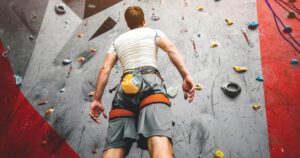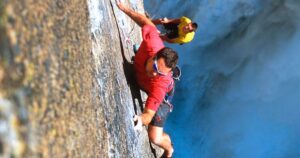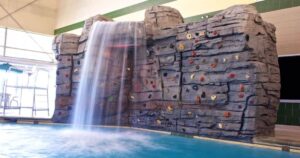Climbing gyms let you climb indoors. They have walls, ropes and gear to learn climbing skills. “Climbing gym” is indoor rock climbing. Gyms change routes to keep it exciting. Lessons help people try climbing. Climbing gyms are for new and experienced climbers. They build strength and endurance. Classes help climbers learn safely.
Learning the Sport
One of the biggest advantages of climbing gyms is the opportunity they provide to learn the sport of rock climbing. Indoor climbing walls allow beginners to try out climbing with no prior experience needed. Gyms offer introductory classes and private lessons from certified instructors. New climbers can learn essential techniques like tying knots, belaying, and climbing footwork before ever venturing outdoors.
The indoor setting is also an ideal training ground for more advanced climbers looking to improve their skills. Climbing gyms allow experienced climbers to practice more difficult maneuvers on a range of terrain. Top-rope climbing and lead climbing skills can be honed through regular gym sessions.
Convenient and Weatherproof
Climbing gyms provide a convenient way to climb regardless of weather or time of day. While outdoor climbing is dependent on ideal conditions, indoor walls are always accessible. Gyms are open year-round, so climbing sessions never have to be cancelled due to rain, cold or dark.
For many, only being able to climb outdoors on nice weekends would severely limit their ability to participate in the sport regularly. Access to climbing gyms enables consistent training.
Community
Climbing gyms help foster community around the shared interest of climbing. Many gyms host social events and competitions that bring climbers together. The communal atmosphere makes it easy to meet fellow climbing enthusiasts.
Climbing with a partner is also safer than climbing alone. Spotting each other and taking turns belaying builds trust and communication. Gyms provide a central place to find reliable belay partners.
Fitness
Climbing is a full-body workout that builds muscular strength, endurance, flexibility and cardiovascular health. It requires using both upper and lower body in synchronized motions. The mix of pulling, pushing and balancing oneself engages muscle groups that everyday exercise routines miss.
Climbing gyms offer an appealing way to get fit while having fun. The constantly changing terrain keeps the body challenged. As climbers improve, they tackle more difficult routes that build even greater strength.
Mental Benefits
Beyond the physical benefits, climbing also improves focus, problem-solving skills and mental tenacity. Finding the best path up a wall requires strategic planning and visualization. Climbers must be fully present in both mind and body to succeed.
Pushing past fears and towards new heights instills a sense of confidence and accomplishment. Climbing gyms provide various ways to challenge both physical and mental limits in a safe environment.
Types of Climbing Gyms
Not all climbing gyms are the same. Most offer top-rope and lead climbing on vertical walls, but additional features vary. When choosing a gym, consider the types of climbing gym offered and amenities that align with your goals.
Bouldering Gyms
Bouldering involves climbing shorter routes close to the ground without ropes. Bouldering-focused gyms have lower walls set between 10-15 feet high with thick padded floors. They appeal to climbers looking to work on strength and technique.
Sport Climbing Gyms
Sport climbing gyms cater to rope climbing, with walls typically ranging from 35 to 60 feet high. They have top anchors installed so climbers can practice lead sport climbing skills. Many general climbing gyms offer both bouldering and sport climbing.
Competition Gyms
Some gyms specialize in competitive climbing with walls set to competition specifications. They hold local youth and adult climbing competitions. Training here helps climbers interested in competing hone their skills.
Additional Amenities
Along with different types of terrain, climbing gyms may offer extra amenities and programming. Things to look for include:
- Fitness classes: Yoga, cardio and strength training classes complement climbing.
- Instruction: Options like private lessons, camps or team training.
- Youth programs: Kid and teen-specific classes and climbing teams.
- Community events: Events like movie nights and clinics build community.
- Pro shop: On-site shops with climbing gear rentals, sales and services.
- Cafe: Healthy food and drinks refuel climbers.
Costs of Climbing Gym Memberships
Joining a climbing gym requires purchasing a membership. Membership costs vary depending on location, gym features and membership duration. Typical climbing gym membership options include:
| Membership Type | Average Monthly Cost |
| Day pass | $20 |
| 1 month unlimited | $50 |
| 3 month unlimited | $45 |
| 12 month unlimited | $40 |
Multi-gym memberships provide access to different gym locations in a region. Family add-on options are also available. Membership may seem expensive at first, but frequent climbers get an affordable per-session rate.
Safety Considerations
While climbing gyms provide a more controlled environment than outdoor climbing, injuries can still happen if proper precautions aren’t taken. Be sure to go through an orientation session and learn how to belay properly before starting. Key safety tips include:
- Tie knots and buckle harnesses correctly every time.
- Use spotters when bouldering.
- Follow belay commands and keep slack out of the rope.
- Don’t overclimb routes beyond your skill level.
- Know how to safely fall and lower from the wall.
- Ask staff if you have any concerns or unsure about techniques.
With proper instruction and vigilance, climbing gyms allow people to experience the thrill of climbing in a fun and safe recreational environment. The sense of community and full-body workout make climbing gyms an uplifting way to exercise.
Finding the Right Climbing Gym
For those ready to start climbing at an indoor gym, finding the right facility is key to having a positive experience. With climbing gyms varying in size, amenities and culture, it’s worth visiting a few options to find the best fit. Consider these factors when choosing a gym:
Location
Pick a climbing gym that’s conveniently located near where you live or work. Having the gym be easy to access increases the likelihood that you’ll be able to go consistently. Look for gyms located within a 15-20 minute drive if possible. Proximity to home or along your regular commuting route makes it easier to incorporate gym sessions into your regular routine.
Facility Size
The size of the climbing gym relates to both the number and height of the walls. Larger gyms have more climbing terrain options. They also tend to be less crowded, which is advantageous for climbing during popular times.
For bouldering, look for wall lengths a minimum of 30 feet long. Top rope walls should have at least 10 different lines to climb. At bigger gyms, rope walls often exceed 40 feet in height with 30+ climb lines.
Wall Features
The wall terrain and types of holds vary between gyms and make certain ones better for different styles of climbing. Overhung walls are best for practicing overhang technique. Vertical walls build endurance for longer routes. Slab walls require balance and footwork.
Look for a mix of wall terrain to become a well-rounded climber. The sets of holds should also change regularly to keep climbs fresh and challenging.
Difficulty Range
Make sure the gym has routes rated across the full range of climbing difficulty levels. Gyms grade climbs using the V-scale for bouldering and YDS system for ropes.
At minimum, the walls should be set from V0-V8 for bouldering and 5.5 to 5.13a for top rope. This allows climbers of all abilities to find appropriate challenges. Achieving progression is hugely motivating, so choose a gym that gives room to grow.
Community Vibe
The community environment at a climbing gym impacts the overall experience. Visit gyms at peak hours to get a feel for the setting and people. Look for a welcoming and supportive atmosphere. Pay attention to how staff interact with members.
A social community helps you meet potential climbing partners. A gym where you fit in makes you more likely to stay motivated.
Instruction and Training
Quality instruction is key for learning proper climbing techniques and improving your skills over time. Look for gyms that offer intro classes, belay certification courses and informative signage throughout the facility.
Some gyms also have accredited coaches that provide private and group training for an added cost. Training plans help serious climbers build strength and refine their technique.
Additional Amenities
As outlined earlier, climbing gyms may include extra amenities like fitness areas, yoga classes or a pro shop. Consider which added features would increase your enjoyment and make the most of your membership. Onsite fitness classes provide built-in cross-training to complement climbing.
Membership Options and Cost
Compare the membership options and costs between climbing gyms in your area. Look for deals like student and family rates if applicable. Make sure the membership terms and policies align with how often you plan to go.
A monthly membership usually makes the most sense for frequent climbers rather than paying a daily rate each visit. Consider a 3-6 month membership if you want to try out the gym before committing long-term.
Cleanliness
Given the heavy use climbing gym equipment gets, pay attention to cleanliness on your visits. The floors should be swept, routes brushed clean, and rental gear washed regularly. Shared amenities like the bathrooms and showers should be sanitary as well.
A dirty gym demonstrates lack of care and raises safety concerns. You want to climb at a facility that values cleanliness and keeps things well maintained.
Finding the right climbing gym takes some research and trial visits. Once you join a gym that fits your needs and goals, you’ll be set up for an engaging, motivational environment to help you progress in the sport. Enjoy the thrill of indoor climbing while staying fit.
Final Verdict
Climbing gyms let you climb rocks indoors. They have walls, ropes, gear and lessons. Gyms help beginners learn to climb safely. Experienced climbers can practice skills.
Climbing is fun exercise. It makes your arms, legs and whole body strong. Climbing also improves focus. Gyms build a community of climbers. You can make new friends. Pick a gym c lose to your home. Join the right membership for you. Go climbing and reach new heights indoors.

